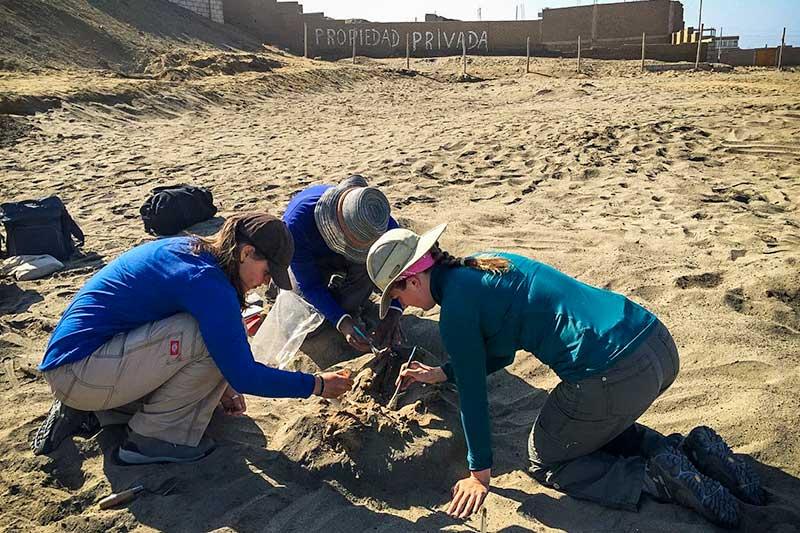Anthropology students excavate ancient site in Peru
After an excavated site on the northern coast of Peru yielded 600-year-old evidence of human and animal sacrifices, John Verano, a professor of anthropology in the Tulane School of Liberal Arts, traveled there to conduct field and lab research with a team of doctoral students.
Specializing in the study of ancient warfare, medical practices and human sacrifice, Verano works as a human osteologist, often analyzing ancient skeletal remains and piecing together details about the subject’s identity, including their health and cause of death.
This summer, he took doctoral students Davette Gadison, Melina Calmon Silva and Khrystyne Tschinkel to the site of the ancient Chimu civilization near Trujillo, Peru, where the grounds unearthed remains of children and llamas.
“[My students] carefully cleaned the material, recorded notes and brought the material to the lab to examine.”
— John Verano, professor of anthropology in the Tulane School of Liberal Arts
The project is supported by grants from the National Geographic Society’s Committee for Research and Exploration and the Roger Thayer Stone Center for Latin American Studies.
Verano has been fascinated by osteology since childhood.
“I would bring back boxes of bones from summer camp and sometimes leave my sleeping bag behind,” he said.
Verano, who has worked in Peru every summer for 30 years, first went to the Chimu site in 2014, after local children accidentally discovered it while playing.
This year, Verano and his team carefully uncovered and gathered the evidence for further study.
“We worked as a unified team. They carefully cleaned the material, recorded notes and brought the material to the lab to examine. They also consulted with each other on topics like age and pathology,” said Verano.

